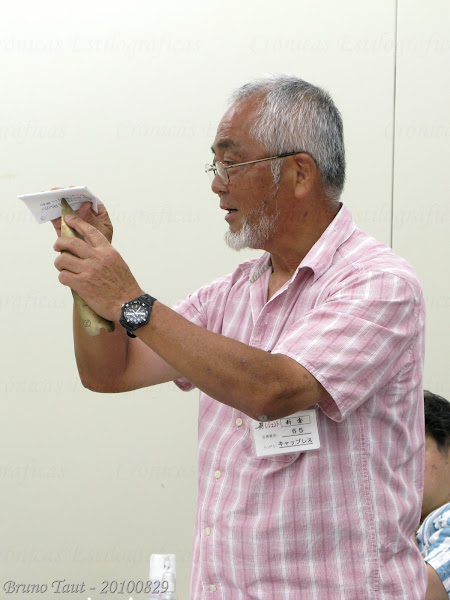Japanese pen makers have remained faithful to the idea of the music nib for a long time, and that despite their absence in the catalog of Western makers for many years. Pilot, Platinum, and Sailor did preserve them in the meantime, although the later of them, Sailor, did simplify it by removing one slit and transforming it into a stub nib.
Sailor did make three-tine nibs in the past. Actually, Masa Sunami and Andreas Lambrou show one such example on their book Fountain Pens of Japan: a humble Sailor Candy from 1979 with a music nib made of steel.
However, the balance model Profit (1911 in many markets) was initially marketed in 1981, and since then implements a new nib whose music version with just one slit and two tines.
The pen I am showing today was made in 1966 and its music nib preserves the traditional geometry. It is also a pocket pen, named Mini by Sailor since its creation in 1963.
This music nib is made of 18 K gold and is not marked with any inscription showing the nib point. It just says Sailor, the gold purity, and the JIS mark. The nib point, though, is revealed on the sticker attached to the cap, together with the original prince of the pen—JPY 3000.
These are the dimensions of this pen:
Length closed: 125 mm
Length open: 95 mm
Length posted: 145 mm
Diameter: 12.0 mm
Weight: 14.0 g (dry with empty cartridge)
Ink deposit: 1.2 ml (Sailor cartridge)
Within the Mini lineup of Sailor, this pen belongs to the more luxurious tier: gold trim, 18 K nib, 18 K gold plated cap band.
 Five different Sailor Mini with the same size and shape. The three top pens are GT --gold trim-- and implement 18 K gold nibs and 18 K gold plated cap bands. The lower two pens use 14 K gold nibs.
Five different Sailor Mini with the same size and shape. The three top pens are GT --gold trim-- and implement 18 K gold nibs and 18 K gold plated cap bands. The lower two pens use 14 K gold nibs.
How common were these music nibs? Hard to say, but those Sailor Mini are easy to find in flea markets and pen shows, and usually they are very inexpensive. However, the vast majority of those Sailor pens implement F and M nibs, and music and B nibs are rarities.
So, this is “yet another music nib”, but not just any music nib.
Antigua's Yatate II – Aurora Black
Bruno Taut
December 30th, 2024
label: Sailor, plumín, plumín musical
Bruno Taut
December 30th, 2024
label: Sailor, plumín, plumín musical





























































